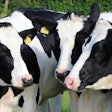
Without most of us knowing, we could, recently, have entered a new epoch, and many you reading this may well have contributed to the evidence defining that change.
There may be enough evidence underfoot to indicate that one geological epoch has come to an end and another begun, and among the indicators for this is the huge number of chicken bones that now exist across the Earth’s surface.
Bones from the domestic chicken are among possible markers for change identified by an expert group presenting at the International Geological Congress, held in Cape Town, South Africa, in August.
They say that the Holocene – the geological epoch which has lasted for 122,000 years, should be seen as having come to end. The new epoch – the Anthropocene, i.e. when human activities have a significant global impact on the Earth’s geology and ecosystems – should be the classification now used.
Good meat, poor company
The scientists argue that the new epoch began in the 1950s, which is more or less when the U.S. poultry industry really took off, and could be defined using a number of markers. These include radioactive elements spread across the planet from nuclear bomb tests, plastic pollution, soot, concrete and the bones left by the proliferation of the domestic chicken.
“Since the mid-20th century, it has become the world’s most common bird. It has been fossilized in thousands of landfill sites and on street corners around the world,” says Professor Jan Zalasiewicz, chair of the Working Group on the Anthropocene.
As big as the dinosaurs
To define a new geological epoch, a signal must be found that occurs globally and will be incorporated into deposits in the future geological record. For example, the end of the Cretaceous period – when the dinosaurs became extinct – is defined by an increase in iridium deposits, dispersed by the comet that collided with Earth.
In contrast to the dinosaurs, some species, with human help, have spread rapidly across the world. Despite being domesticated thousands of years ago, it is only since the mid-20thcentury that mass production of chicken has spread across the world, and production and consumption of chicken meat is forecast to continue growing, making its presence in future fossil records likely to grow, and increasing its chances of being a fossil that defines the Anthropocene.
So the domestic broiler may well go down in history, not as being a quick to rear source of meat that became the most popular source of animal protein globally, but as a long-lasting common deposit that marked the change from one epoch in the Earth’s history to the next.



















